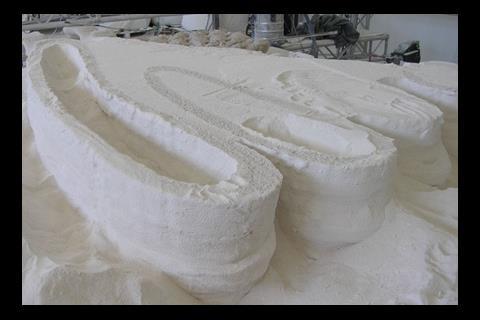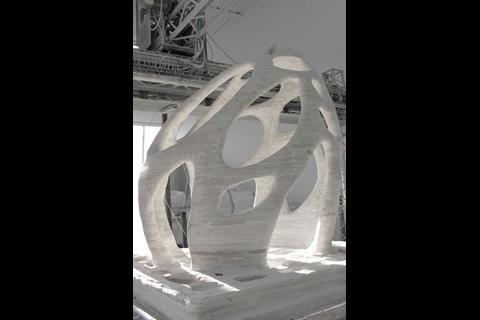Pavilion near Pisa is first building to be constructed using Enrico Dini’s ‘structural ink’ technology
A vision of an unmanned construction industry is being tested near Pisa, where a British-backed company is attempting to “print” a building.
The technology, which is being pioneered by Italian firm d_shape, involves the use of “structural ink”, which can bind any type of sand or gravel into a marble-like material. The ink is deposited by an automated nozzle that moves around an aluminium frame within which the building is constructed. The nozzle works in the same way as the jet on a computer printer.
Enrico Dini, the has claimed that the technology will revolutionise the construction industry. He said: “It’s not a matter of ‘if’ but ‘when’ this technology enters the building industry.”
A trial project, the Radiolaria pavilion, is being built on a small roundabout in the Tuscan town of Pontedera.
Dini’s ambition stretches to the biggest challenges in architecture – including finishing Gaudí’s Sagrada Familia in Barcelona, which has been under construction since 1882. “We hope to use d_shape to complete the cathedral,” he said.
The pavilion will be assembled on site from blocks printed nearby, which means that the structure still needs some degree of assembly. However, Dini holds four patents for the technology, under the aegis of UK holding company Monolite, and one of these is for a system capable of building complete structures.
Austin Williams, director of lobby group Future Cities Project, was sceptical about its future. He said: “I’d love this to be mainstream, but construction is a Dickensian industry here. Prefabrication has been possible for a hundred years but it has never caught on, primarily because of the dominance of wet trades and risk aversion.”
Dini insisted his technology was already cheaper than concrete in the luxury market. He said: “If you take a basic two-storey building, we would be twice the price. But if you look at a
free-form building which would require complicated form works, there is no game. We win.”
The Radiolaria pavilion is set to complete in spring next year.
































1 Readers' comment